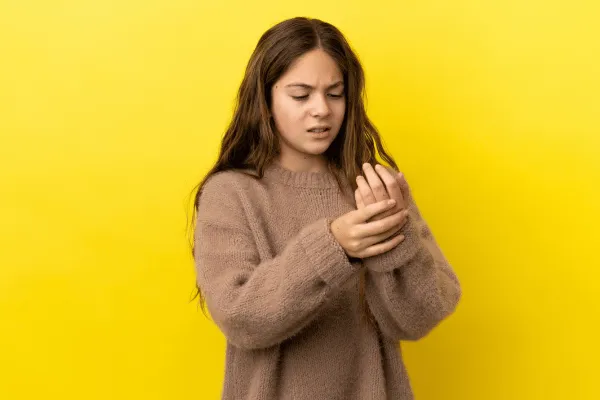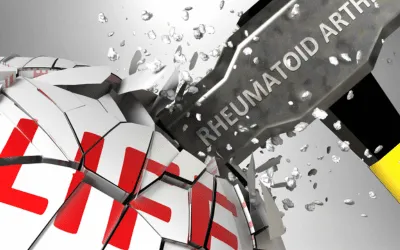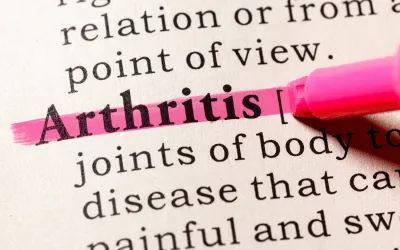About Arthritis
As the nation’s #1 cause of disability, arthritis affects nearly 60 million adults and 300,000 children. Over 100 types of arthritis and related conditions damage the joints and often other organs.
How can we assist you?
Helpful Tools for You

Guiding Your Child Through Understanding Juvenile Arthritis
Helping Your Child Navigate the World of Juvenile Arthritis with Compassion and Knowledge.
Understanding the Condition:
Typically, a pediatric rheumatologist will discuss the condition with your child. Dr. Karen Onel, a leading expert in pediatric rheumatology from the Hospital for Special Surgery in New York, engages both parents and children during the diagnosis. She simplifies explanations and occasionally uses joint models to clarify the situation.
Dr. Onel often says, "When we mention 'arthritis,' we're referring to a joint that's swollen, warm, painful, and not functioning as it once did." She highlights that while many might associate arthritis with older family members, like a grandma needing a hip replacement, Juvenile Idiopathic Arthritis (JIA) is distinct. Dr. Onel describes it as our body's excellent defense system sometimes mistakenly targeting its components. "If this happens to someone under 16 for more than six weeks, we call it JIA," she adds.
Dr. Kelly Rouster-Stevens from Emory University School of Medicine also emphasizes the immune system's role. She explains to children, "The immune system is designed to combat infections. However, at times, it mistakenly targets and harms the joints even in the absence of an infection." In simpler terms, the immune system's job is to protect against "bad guys," like harmful germs, but occasionally it misdirects its actions toward the joints.
Understanding the Origins of JIA:
The exact cause of JIA remains a mystery, with "idiopathic" literally translating to "unknown." However, experts believe it's likely a mix of genetic and external influences. As described in the Arthritis Foundation's guide, “Your Journey With Champ: Learning About Juvenile Arthritis,” it's hypothesized that JIA might result from the way our genes react to external triggers, perhaps a bacteria or virus. To put it simply, imagine a science experiment where two distinct elements combine to produce a unique reaction. In this scenario, that reaction is arthritis.
Understanding the "Why":
The question "Why did this happen to me?" is one that resonates with people of all ages. As Rosalind Dorlen, Ph.D., a clinical psychologist with expertise in chronic illness-related psychological issues, points out, often there isn't a straightforward answer. Some might attribute it to familial trends or genetics. However, Dr. Dorlen emphasizes that children should be reassured that the onset of the disease isn't their fault and they played no part in causing it. It's essential for them to feel supported, understanding that they're not battling JIA alone but as a united front with their loved ones.
She encourages affirming to kids, “The reason behind the disease might be uncertain, but what's clear is that I'm always here for you.” This unwavering support extends to moments of sadness, frustration, or when they question the fairness of their situation.
Discussing treatment is vital too. As Dr. Dorlen advises, parents should communicate the benefits of treatment clearly, ensuring the child knows it's for their well-being, even if it seems challenging initially. Dr. Rouster-Stevens simplifies this by telling children that treatments aim to reduce inflammation, preventing their immune system from harming their joints.
Navigating Challenges:
Understanding and accepting a JIA diagnosis isn't always straightforward, even with the best explanations and reassurances. If you feel your child is struggling to come to terms with their condition, Dr. Dorlen suggests seeking guidance from a psychologist or another mental health expert. They can offer valuable support during these difficult moments.
Effects of Arthritis

Cause of Disability
In the United States, 23% of all adults, or more than 54 million people, have arthritis. It is a leading cause of work disability, with annual costs for medical care and lost earnings of $303.5 billion.

Workforce Effects
Sixty percent of US adults with arthritis are of working age (18 to 64 years). Arthritis can limit the type of work they are able to do or keep them from working at all.

Global Impact
In fact, 8 million working-age adults report that their ability to work is limited because of their arthritis. For example, they may have a hard time climbing stairs or walking from a parking deck to their workplace.
Promoting Interventions That Reduce Arthritis Pain
American Arthritis Foundation recognizes several proven approaches to reduce arthritis symptoms:
Be active. Physical activity—such as walking, bicycling, and swimming—decreases arthritis pain and improves function, mood, and quality of life. Adults with arthritis should move more and sit less throughout the day. Getting at least 150 minutes of moderate-intensity physical activity each week is recommended.
Protect your joints. People can help prevent osteoarthritis by avoiding activities that are more likely to cause joint injuries.
Talk with a doctor. Recommendations from health care providers can motivate people to be physically active and join a self-management education program. Should your arthritis be interfering with your activities of daily living you may be a candidate to receive many new treatments, and learn how to reverse the arthritis condition.
Have a question?
We're Here to Help
By providing my phone number, I agree to receive text messages from the business.

